- Home
- Anne Schraff
The Life of Frederick Douglass Page 4
The Life of Frederick Douglass Read online
Page 4
But Frederick Douglass was not so meek. He grabbed a piece of lumber and began swinging it at the tormentors. This action violated William Lloyd Garrison’s strict insistence on total nonviolence no matter the provocation. William A. White, a young white Harvard abolitionist who was Douglass’s friend, quickly rushed to stand beside Douglass. When one of the white men swung a club, knocking Douglass to the ground and breaking his right hand, White snatched up a stick to help his friend. Another white man tried to strike Douglass with such a fierce blow to the head that it might have killed him, but White knocked the cudgel from the man’s grasp before it reached his target. Someone threw a stone at White and it hit him in the head, causing a gash that bled heavily. Then Douglass and White ran side by side for their lives.
The incident burned itself into Douglass’s memory. He was so touched that a young white man like White, who lived a life of ease and luxury, would risk his life to stand by his black friend. When the mob finally dispersed, White lay in the woods, his head gashed and his mouth bleeding from a kick that had dislodged several teeth. Douglass lay nearby, cradling his shattered hand. Later, Douglass’s injured hand was not set properly, and it would bother him for the rest of his life.
As Douglass spoke at more and more meetings, some of the people in the audiences began to doubt that he had ever been a slave. He was so eloquent and sounded so well educated that it seemed impossible that he could have been a slave without formal education. When Douglass recounted the harrowing events of his youth, the starvings and the whippings, some listeners shook their heads in disbelief and wondered aloud if this young man was a fraud.
Douglass decided to put to rest all doubts, even though doing so would put his personal safety at risk. He would write a book describing all his experiences, using the true names of all the people who had touched his life, including his masters and mistresses. He would tell everything exactly as it had happened. This was obviously dangerous because he was still a fugitive slave, and once the book was published Thomas Auld would be able to find out where his slave had gone. Douglass decided to take that chance. He felt that the book would make the whole world pay attention to his antislavery message. His crusade would extend far beyond the reach of his voice.
On October 21, 1844, son Charles was born to the Douglass family. They now had four children under the age of five. The following year, fellow abolitionist Wendell Phillips urged Douglass to finish his book, and in his speeches that year Douglass told his audiences that his story would soon be in print for all the world to read.
Though Douglass was a prolific writer, he never left any account of his writing process. When he sat down to write his first book, did he make many drafts? Did he rewrite alone or did his friends help him select what to include and what to omit? It is not known what advice he might have received, nor even who edited the book. At any rate, The Narrative of the Life of Frederick Douglass, An American Slave, Written by Himself was published by the Boston Anti-Slavery Society in 1845. The book tells its readers a lot about slavery, its privations, its cruelty, and how it impacted the life of one man. There are powerful accounts of extreme brutality, but even more affecting are the smaller hurts—the little slave boy denied his meager slice of corn bread, the lonely child huddling in the winter cold in his linen shirt. Only Harriet Beecher Stowe’s Uncle Tom’s Cabin was more influential in revealing the true face of slavery to the American reading public and, eventually, to the world.
William Lloyd Garrison wrote the preface to the book, and Wendell Phillips wrote a letter preceding the text. These famous men lent authenticity to the book. Garrison clearly stated that the book was not ghostwritten but came from Douglass himself. The book sold for fifty cents, and by the fall of 1845, forty-five hundred copies were sold in the United States. Within five years, thirty thousand copies had been sold in the United States and Europe. The book became so well known that there could be little doubt that Thomas Auld now knew what had become of Frederick Bailey, his slave.
As the fame of the book spread, Douglass made a trip to Europe to bring the abolitionist message across the seas. The trip also had the advantage of putting Douglass out of Thomas Auld’s reach if he sought to recover him. As Douglass sailed to England on the British ship Cambria, he traveled second class but made many friends aboard ship. He gave shipboard lectures on the evils of slavery, winning the admiration and sympathy of many of the passengers. Not everyone was eager to hear his message though. After a fiery speech about the evil merchants who used ships like the Cambria to haul slaves from Africa, several angry passengers wanted to toss Douglass overboard. Only the intervention of the captain spared Douglass a plunge into the sea.
While Douglass was away, his wife, Anna, remained in Lynn with their four children. She worked in a shoe factory to keep the family going. Douglass was not making a great deal of money from his book, and his travel in the cause of abolition was expensive. Anna Douglass struggled to do more than her share in his absence.
Frederick Douglass gave many speeches against slavery when he reached Europe, and he also embraced other causes, such as temperance, a movement to induce people to abstain from alcoholic beverages. He gave this message with special enthusiasm in Ireland, where alcohol abuse made the plight of poor families even worse. Observing the misery in Ireland, the thin-armed children and desperate mothers, Douglass was reminded of the plight of slaves in the United States. The potato famine was beginning in Ireland at the time, a famine that would eventually devastate the population and drive vast numbers of Irish people to immigrate to the United States. Frederick Douglass wrote a poignant letter to William Lloyd Garrison describing a mud-walled, windowless hut in Ireland with a board on the floor for a table and rags and straw for beds. Between the years of 1845 and 1851, Ireland lost 2 million people to death and emigration.
Douglass made many speeches in Belfast, Ireland, and then went on to Edinburgh, Scotland. For two years he lectured throughout Europe, joined part of the time by Garrison. Douglass was anxious to go back home, but he worried about being captured and returned to slavery. At last, Douglass’s English friends raised sufficient money to buy his freedom. In October 1845, Thomas Auld signed a deed of manumission, freeing Douglass for the amount of $711.66. The necessary papers were filed, making Douglass a freed human being on December 12, 1846.
Before leaving Europe, Douglass had discussed starting an antislavery newspaper in the United States. Among those supporting the idea was an English abolitionist, Julia Griffiths, who became a friend and colleague of Douglass’s for the next half century.
When Douglass finally returned to the United States on April 20, 1847, he jumped onto the Boston wharf and ran for the train to Lynn. Within fifty yards of his home he was met by two bright-eyed boys, his sons Lewis and Fred, running and dancing with joy. Douglass took one by the hand and the other in his arms and hurried home.8
In the fall of 1847, Douglass began making serious plans for his own antislavery newspaper, an idea William Lloyd Garrison opposed. In order not to compete with The Liberator in New England, Douglass moved to Rochester, New York, to live and publish his paper. The Douglass family moved into a two-story brick house, and on December 3, 1847, a four-page issue of The North Star was printed. Funds raised in England to launch the newspaper amounted to $2,001.47. On the masthead of the paper was the motto “God is the Father of us all, and we are all Brethren.”9
It had been very difficult for Anna Douglass to move to Rochester and give up her familiar surroundings in New Bedford. Daughter Rosetta had been sent to Albany to live and study with two well-known women reform crusaders, Abigail and Lydia Mott. Now, with the family in Rochester, Rosetta would be returning home. It would be hard for the uneducated mother to exert authority over her much more educated daughter.
Because Anna Douglass could not fully share her husband’s public life, she took comfort in household tasks and her beloved garden. She never felt comfortable with her husband’s literate, often famous friends. Sh
e greeted them all at her home with unfailing grace, then withdrew quickly to the kitchen.
Ten-year-old Rosetta was a student in Miss Lucilia Tracy’s school in Rochester, and Douglass was getting good reports on her progress. But when Douglass asked his daughter how she was doing, she wept and admitted she was kept separate from the white students. Douglass described himself as “shocked, grieved, and indignant” by the fact that Rosetta was studying “in a room by herself.”10 When Douglass complained to the school, Tracy polled the children to see if they would accept a black student among them. The children all agreed that they wanted Rosetta with them, but one white father protested having a black child study with his daughter. Rosetta was given her pencils and books and told to go home. Frederick Douglass sent his daughter to another school, but he was deeply hurt by the incident.
On March 22, 1849, the Douglasses’ fifth and last child, Annie, was born. Soon after that, Julia Griffiths, Frederick Douglass’s friend from England, arrived at the family home. She had contributed money to launching The North Star, and now she came to help straighten out the financial state of the paper. Though well received, The North Star was costly to print and its target audience, black people, often lacked the funds to subscribe.
Douglass had been forced to mortgage his home to keep the newspaper going, and he had written to Griffiths of his troubles. She came immediately and put The North Star back on track financially. The mortgage loan was paid off and revenue from the paper was helping to support the Douglass family by 1851. But there was considerable gossip concerning the relationship between Frederick Douglass and Julia Griffiths. The two worked together constantly, and when Douglass went on speaking tours he was often accompanied by Griffiths and her sister. Eyebrows were raised at the sight of a black man escorting two white ladies. After attending a New York City convention, Douglass and the sisters were confronted by a mob of white men shouting obscenities. Douglass was dragged away and beaten until the sisters found a white police officer to come to his rescue and drive the attackers away.
Julia Griffiths had a friendly relationship with Anna Douglass in the house the women shared. Griffiths even tried to teach Anna Douglass to read, but she failed in the effort. Though Anna Douglass apparently made no objection to the unusual situation of another woman living with the family, gossip became so intense that Griffiths moved out of the Douglass home. However, Julia Griffiths remained a close associate of Douglass in their shared antislavery crusade. In 1855 she returned to England, but she and Douglass continued to write to each other for the next forty years.
In 1851, Douglass was contacted by another famous woman, Harriet Beecher Stowe, an abolitionist author who was in the process of writing a dramatic novel about slavery—Uncle Tom’s Cabin. Douglass and Stowe discussed the problems of slaves who came north without skills enough to survive. Douglass shared with her his dream of a manual arts school near Erie, Pennsylvania, that would help needy and uneducated black youths learn a trade. Stowe, however, doubted that “the coloured population has advanced sufficiently to carry it through.”11 The dream died for lack of funds.
In June 1851, Douglass replaced The North Star with another newspaper, Frederick Douglass’s Paper. Momentous events were taking place in the United States that were having a great impact on slavery. The 1850 Missouri Compromise contained the Fugitive Slave Act, which greatly strengthened the reach of slave catchers. Runaway slaves could be more easily hunted down on northern streets and forced back to their southern masters. Douglass became even more deeply involved in the Underground Railroad, a system of safe houses that sheltered escaping slaves as they traveled from the South to the North. Canada was the only truly safe refuge from slave catchers now. During the 1850s, the Douglass house became a safe house, offering a haven to runaway slaves. Douglass became a superintendent on the Underground Railroad, taking charge of arranging the establishment of safe houses where runaways could get food and shelter on their way to freedom. At times, a dozen slaves hid in the Douglass home. Frederick and Anna Douglass fed, housed, and comforted hundreds of fleeing men, women, and children.
Douglass quickly attacked the Fugitive Slave Act in newspaper articles and speeches, and his oratory against slavery became more bitter. In a speech on July 4, 1852, he used the occasion of the nation’s Independence Day to point to the horror of slavery. He called the festive celebration of freedom on this day “a sham” to black Americans.12 He closed with a dire warning. “A horrible reptile is coiled up in your nation’s bosom,” he cried. “For the love of God, tear away and fling from you the hideous monster and let the weight of twenty millions crush and destroy it forever!”13 This speech has been called the “greatest antislavery oration ever given.”14
In 1855, Douglass published his second autobiographical book, My Bondage and My Freedom. It provides an even deeper and more insightful look at slavery than his Narrative does.
The rift between Douglass and William Lloyd Garrison was growing deeper. Though both of them hated slavery with a passion, they had very different ideas about how best to fight it. Mutual friends lamented the bitterness between the two men and believed it harmed the entire abolition movement.
Chapter 7
FIGHTING FOR FREEDOM
Harriet Beecher Stowe criticized William Lloyd Garrison for his anger toward Frederick Douglass. She scolded him for speaking of Douglass as an “apostate” who had given up his principles.1 Stowe, along with many other abolitionists, feared the harm disunity was doing to the movement.
But the disagreements were too real to be papered over. Garrison fervently believed that violence was never an option. In 1849, Frederick Douglass was telling audiences that a slave revolt might be necessary to end slavery. Garrison saw the United States Constitution as a pro-slavery document that could never be used to serve the goals of abolition. Garrison called the Constitution “a covenant with death and an agreement with hell” and publicly burned the document to make his point.2 Douglass wanted to make political appeals for abolition that would use the principles within the Constitution. The only means Garrison saw to end slavery was to convince people that it was morally wrong. Douglass feared that Americans could never be convinced by moral appeals to their better natures. With such deep differences, the two men could not reconcile.
In 1857, the United States Supreme Court affirmed the right of a slave owner to reclaim his slave even if the slave had fled to a free part of the country and now lived there. This decision in the Dred Scott case enraged Douglass and he called it “devilish,” vowing that it would not stand.3
During the 1840s, Douglass had met with a fiery white abolitionist named John Brown. Douglass found in Brown a good friend because of his passionate hatred of slavery. During the 1850s, Brown was a frequent visitor at the Douglass home. In 1859, Brown laid plans to lead an attack on the northern Virginia town of Harpers Ferry, seize weapons in the federal arsenal, and hold local citizens hostage while he organized a slave rebellion in the area. Brown discussed the plan with Douglass. Douglass was sure it was doomed. After meeting with Brown and his small group of followers, Douglass grew even more pessimistic about the chances for success in a raid on Harpers Ferry. He told Brown that he was going into “a perfect steel trap” and that he and his men would be blown “sky high.”4 Brown continued to ask for Douglass’s help, but Douglass turned him down.
On October 18, 1859, Brown led his army of twenty-two men on Harpers Ferry and seized the arsenal. The next night federal troops led by Colonel Robert E. Lee stormed the armory where Brown and his men were barricaded, capturing Brown, killing one of his sons, and ending the rebellion.
Douglass was lecturing in Philadelphia when he learned of Brown’s capture. He also learned that the federal troops found a note from Douglass on one of Brown’s men. The governor of Virginia immediately tried to implicate Douglass in the conspiracy against Harpers Ferry. He asked President James Buchanan to assist in arresting all of Brown’s allies, including Frederick Douglass. Douglass
was to be charged with inciting servile insurrection.
The sheriff of Philadelphia received orders to find Douglass and arrest him. Douglass quickly left Philadelphia and went to New York, but he did not feel safe there, either. He boarded a boat for Canada. It was a prudent move. The next day United States marshals arrived in Rochester looking for him.
Douglass had been planning another lecture tour in Europe, so he left Canada for England in November. On December 7, 1859, Douglass received a letter from his daughter Rosetta, telling him that John Brown had been hanged by “Virginia hyenas.”5
In England Douglass visited with his old friend and associate Julia Griffiths, who had married. Douglass made many speeches against slavery to European supporters, but a personal tragedy turned the triumphant tour into sorrow. While in Glasgow, Scotland, Douglass learned that on March 13, 1860, his bright, spirited younger daughter, Annie, had died just nine days before her eleventh birthday. Anna Douglass was disconsolate. The little girl, her namesake, had been the charming delight of both her parents. Douglass himself had received a cheerful letter from Annie in December describing her adventures at school and her academic progress. Soon after that, she became ill and lost the power to hear or speak. Doctors were unable to diagnose her malady, and she died after lingering for three months. Rosetta Douglass took comfort in the fact that her little sister “has gone to Him whose love is the same for the black as the white.”6 Douglass’s grief was made more intense by his regret that he had not been home during Annie’s illness. He called her “the light and life of my house.”7
When Douglass returned to the United States, the presidential election of 1860 was under way. He saw it as crucial in the fight for abolition. He first campaigned for his friend Gerrit Smith, candidate for the Constitutional Union Party, which had a strong antislavery platform. But Douglass soon realized that Smith could not win and that either Abraham Lincoln, the Republican, or Stephen Douglas, the Democrat, would become president. Douglass despised Stephen Douglas as “a most dangerous man,” saying further, “No man of his time has done more than he to intensify hatred of the negro.”8 Neither was Douglass a fan of Lincoln, accusing him of being “entirely devoted to the welfare of white men.”9 But Lincoln was the lesser of evils in Douglass’s view, so Lincoln got his support.

 Unbroken
Unbroken Wildflower
Wildflower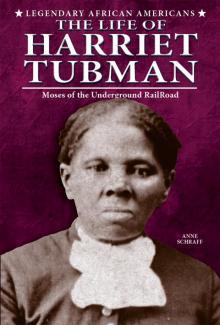 The Life of Harriet Tubman
The Life of Harriet Tubman Like a Broken Doll
Like a Broken Doll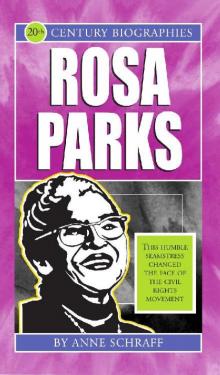 Rosa Parks
Rosa Parks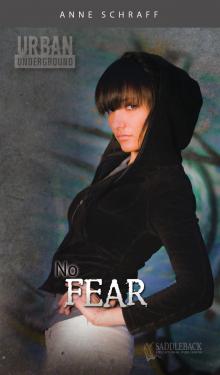 No Fear
No Fear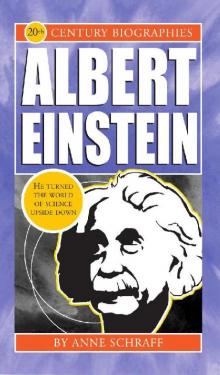 Albert Einstien
Albert Einstien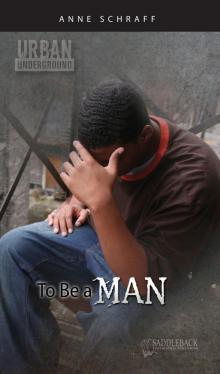 To Be a Man
To Be a Man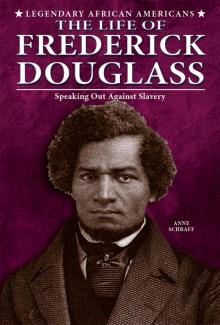 The Life of Frederick Douglass
The Life of Frederick Douglass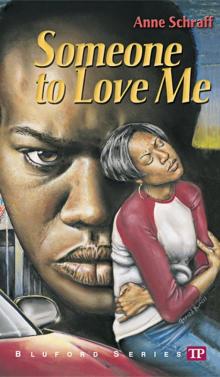 Someone to Love Me
Someone to Love Me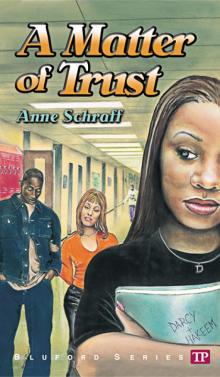 A Matter of Trust
A Matter of Trust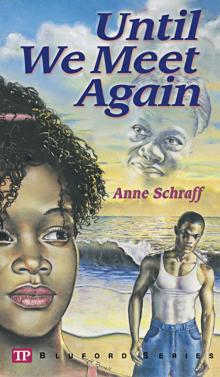 Until We Meet Again
Until We Meet Again If You Really Loved Me
If You Really Loved Me